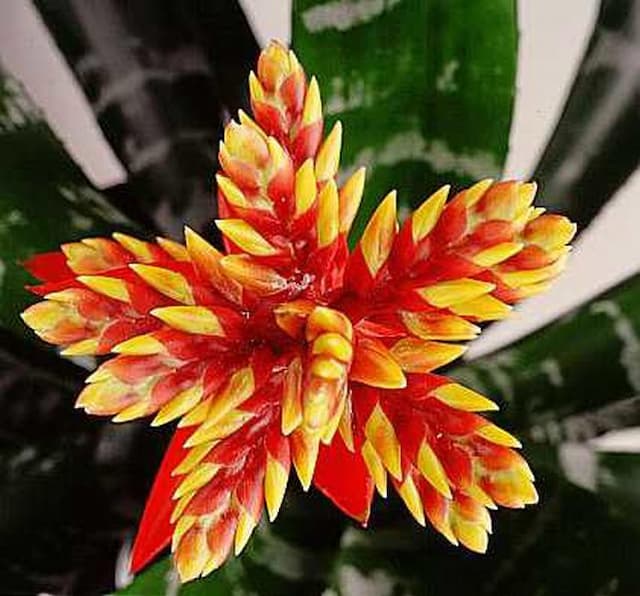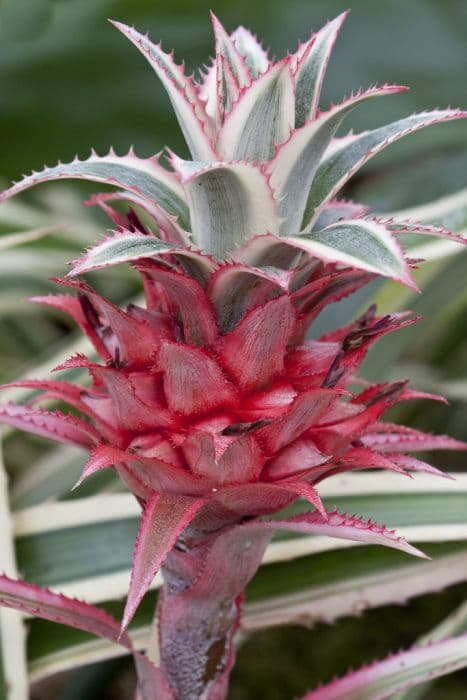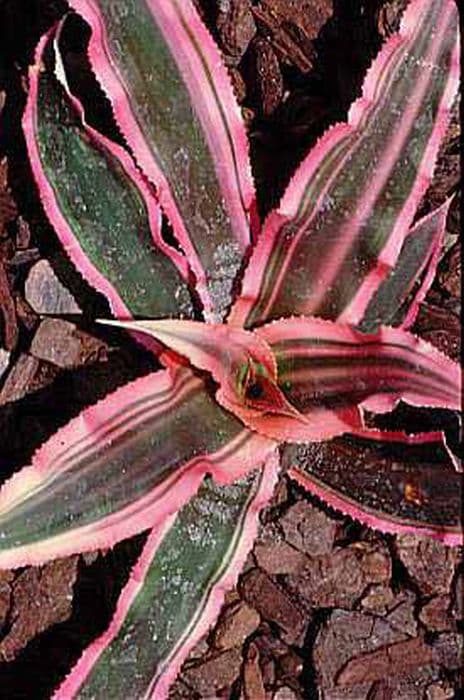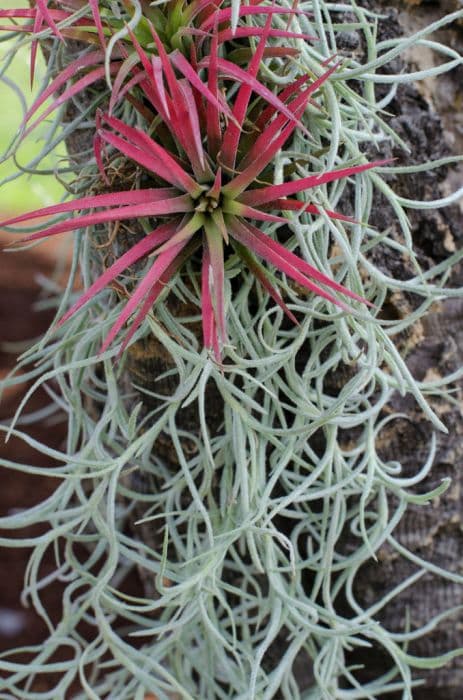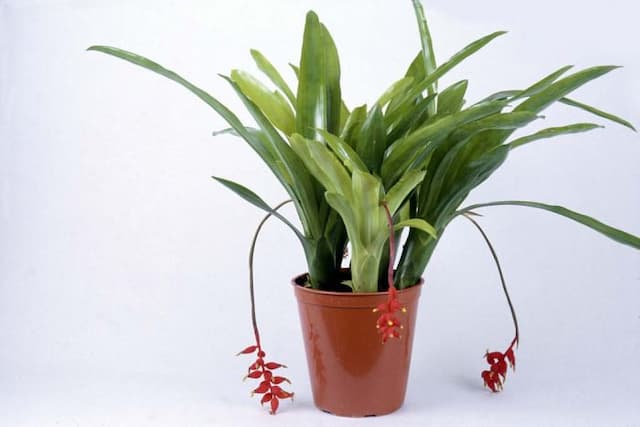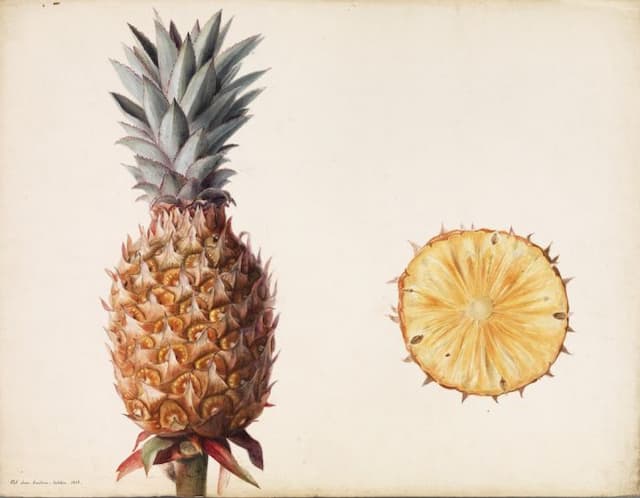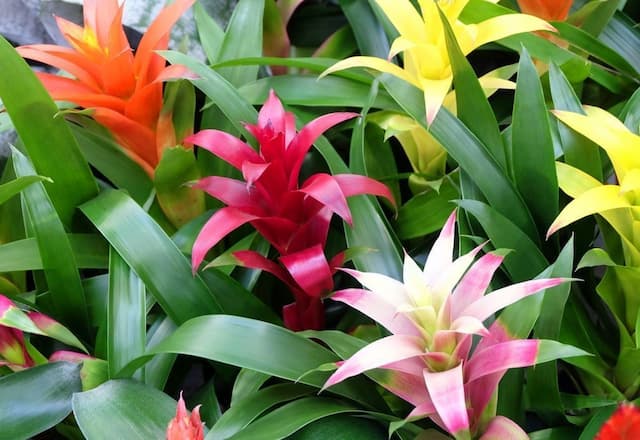Albertiana air plant Tillandsia albertiana

ABOUT
Tillandsia albertiana, commonly referred to as air plant, is a unique-looking flora that lacks the typical roots system of terrestrial plants. This enables it to cling to various surfaces rather than being rooted in soil. Its base typically has a bulbous shape, from which slender, silver-green leaves emerge gracefully. The leaves are narrow and taper to a point, often appearing to curl or twist slightly. The air plant blooms with vibrant flowers that contrast with its foliage. The flowers are tubular and typically come in hues of bright red or coral, which can add a pop of color and vitality to the plant's silvery green base. When in bloom, this striking coloration makes it particularly eye-catching. After flowering, which happens once in the plant's lifetime, it will produce offsets, or "pups," that grow from the base of the mother plant. These pups will eventually mature and can be separated to form new individual plants. Overall, the air plant boasts an almost ethereal quality, with its ability to thrive while perched on other surfaces, like branches or rocks, and its striking, colorful bloom stark against the more muted tones of the leaves. It's a favorite among enthusiasts for its ease of care and otherworldly visual appeal, adding a touch of natural artistry to indoor environments or mounted outdoor displays.
About this plant
 Names
NamesFamily
Bromeliaceae
Synonyms
Albertiana Air Plant, Flowering Air Plant
Common names
Tillandsia albertiana
 Toxicity
ToxicityTo humans
Tillandsia albertiana, commonly known as air plant, is not known to be toxic to humans. Therefore, ingesting any part of this plant typically does not result in poisoning or adverse health reactions.
To pets
The air plant, known scientifically as Tillandsia albertiana, is not considered toxic to pets. Ingestion of parts of this plant should not cause any significant symptoms of poisoning in animals such as dogs or cats.
 Characteristics
CharacteristicsLife cycle
Perennials
Foliage type
Evergreen
Color of leaves
Green
Flower color
Red
Height
4-6 inches (10-15 cm)
Spread
4-6 inches (10-15 cm)
Plant type
Herb
Hardiness zones
9
Native area
Argentina
Benefits
 General Benefits
General Benefits- Easy to Care For: Tillandsia albertiana, commonly known as air plants, require minimal maintenance, making them ideal for busy individuals.
- Enhances Decor: With their unique appearance, air plants can add an exotic and artistic touch to home and office settings.
- No Soil Needed: Air plants do not require soil, eliminating the mess associated with potting and repotting plants.
- Flexible Display Options: The small size and soilless nature of air plants allow for versatile display options including terrariums, shells, and mounted on different surfaces.
- Ideal for Small Spaces: Air plants are compact, making them perfect for small living spaces like apartments.
- Visual Variety: Air plants come in various shapes and colors, providing an aesthetic variety that can complement different interior designs.
 Medical Properties
Medical Properties Air-purifying Qualities
Air-purifying QualitiesThis plant is not specifically known for air purifying qualities.
 Other Uses
Other Uses- Decorative Jewelry: Tillandsia albertiana can be used to create unique, live jewelry such as brooches or pendants, offering a distinct and eco-friendly accessory.
- Bookmarks: Small, flat Tillandsia albertiana plants can be pressed and dried to make natural bookmarks that bring a touch of nature to your reading experience.
- Wedding Bouquet Accents: These plants can add an exotic and modern flare to wedding bouquets, providing a special and sustainable element.
- Textile Dyes: The leaves or flowers could potentially be used to create natural dyes for fabrics, contributing to eco-friendly textile making practices.
- Art Installations: With their interesting shapes and textures, Tillandsia albertiana can be included in living art installations to add a dynamic, three-dimensional effect.
- Education: These plants can be used in classrooms to teach children about botany and the importance of air plants in ecosystems.
- Photography: They provide an exotic and thrilling subject for photographers looking to capture the essence of epiphytic plants.
- Eco-Friendly Confetti: When dried, the smaller parts of the plant could be used as a biodegradable confetti alternative in celebrations.
- Christmas Ornaments: Tillandsia albertiana can be decorated and hung on Christmas trees as a living ornament that can last beyond the holiday season.
- Musical Instrument Decoration: They can be attached to the surfaces of certain musical instruments like drums or guitars for an unusual, natural aesthetic.
Interesting Facts
 Feng Shui
Feng ShuiThe Tillandsia, commonly known as air plant, is used in Feng Shui to promote the flow of positive energy and enhance air quality. Because they don’t require soil and absorb moisture and nutrients through their leaves, they symbolize freedom and creativity. They can be placed in the east part of a home for health and family, or in the southeast to attract wealth and abundance.
 Zodiac Sign Compitability
Zodiac Sign CompitabilityThe Tillandsia is not used in astrology practice.
 Plant Symbolism
Plant Symbolism- Resilience and Strength: As an air plant, Tillandsia albertiana can grow without soil, symbolizing the ability to thrive even in challenging conditions.
- Independence and Self-reliance: This plant's ability to grow without the need for grounding in soil can be seen as a symbol of independence and self-sufficiency.
- Air and Spirituality: In some cultures, air plants like Tillandsia albertiana represent the element of air and are associated with spiritual growth and the quest for higher knowledge.
- Unconventional Beauty: With its unique appearance and growth habit, Tillandsia albertiana may be seen as a symbol of beauty that defies traditional expectations.
- Adaptability: The plant's adaptability to various climates and conditions speaks to its symbolic meaning of flexibility and the ability to adjust in life.
 Water
WaterThe Tillandsia albertiana, commonly known as air plant, prefers frequent watering by misting or soaking. Mist the plant 2-3 times a week, ensuring the water covers both the leaves and the base. Alternatively, you can soak the plant in water for about 30 minutes once a week. After soaking, shake off any excess water to prevent rot. Depending on the humidity, you may need to adjust the frequency, but never let the plant dry out completely. It’s best to use approximately 4 ounces of water per misting session.
 Light
LightAir plants thrive in bright, indirect light. Place your Tillandsia albertiana near a window that gets plenty of natural light, but out of direct sunlight, which can scorch its leaves. An east or west-facing window is an ideal spot for this plant. If natural light is limited, artificial grow lights can also provide the necessary illumination for healthy growth.
 Temperature
TemperatureFor Tillandsia albertiana, or air plant, the ideal temperature range is between 50 and 90 degrees Fahrenheit. The plant can survive a minimum temperature of around 45 degrees Fahrenheit, and maximum temperatures of about 90 degrees Fahrenheit. Always keep the air plant away from cold drafts and extreme heat sources to maintain the ideal climate conditions.
 Pruning
PruningPruning Tillandsia albertiana, commonly known as air plant, is mainly for aesthetic purposes and to remove any dead or damaged leaves. Simply use your fingers or small scissors to gently remove the unwanted leaves. The best time to prune is during or after the plant's blooming cycle. Pruning can be done as needed, typically once or twice a year, to maintain the plant's compact, attractive shape.
 Cleaning
CleaningAs needed
 Soil
SoilAir plants like Tillandsia albertiana, commonly known as Alberto's air plant, do not require soil as they absorb moisture and nutrients through their leaves. Instead, they need to be mounted on a surface that allows air circulation, such as wood, rocks, or a specialized air plant holder.
 Repotting
RepottingAlberto's air plant does not need repotting since it does not grow in soil. However, it may need to be remounted if it outgrows its current support or if the mounting material deteriorates.
 Humidity & Misting
Humidity & MistingTillandsia albertiana thrives best in high humidity conditions, with optimal levels around 60% or higher, which mimics their natural tropical and subtropical habitats.
 Suitable locations
Suitable locationsIndoor
Place in bright, indirect light and ensure good air circulation.
Outdoor
Hang in dappled sunlight, protect from frost and heavy rain.
Hardiness zone
9-11 USDA
 Life cycle
Life cycleTillandsia albertiana, commonly known as air plant, begins its life cycle as a seed dispersed by wind or water. Upon finding a suitable host, such as a rock or tree, the seed germinates and establishes itself with tiny anchoring roots, which serve mainly to secure the plant and not for nutrition uptake. The plant then grows through a rosette stage, absorbing water and nutrients directly from the air and rainfall through its leaves due to its epiphytic nature. Over time, it matures and produces a vibrant red or purple flower that is pollinated by birds, insects, or wind. After flowering, it sets seed and may also produce offsets, or "pups," from the base, which develop into new plants, gradually forming a clump. The parent plant typically dies after flowering and seeding, leaving behind the next generation of air plants to continue the cycle.
 Propogation
PropogationPropogation time
Spring-Summer
Propogation: Tillandsia albertiana, commonly known as air plant, is typically propagated through the division of offsets, also known as "pups," which are produced by the parent plant. These pups emerge from the base of the plant after the flowering cycle is complete, usually during the spring or early summer. The most popular method of propagating Tillandsia albertiana involves gently separating these pups when they are about one-third the size of the parent plant, which ensures they have developed sufficient roots and leaves to survive on their own. Carefully remove the pup by holding both the mother plant and the pup and gently twisting or pulling them apart. If necessary, use a clean, sharp blade to sever the connection, being careful not to damage the base of the pup. Once detached, the pup can be placed in a bright spot with good air circulation to continue growing into an independent air plant. It is crucial not to overwater the newly separated pups as their root systems are still developing and can easily rot if kept too moist.
